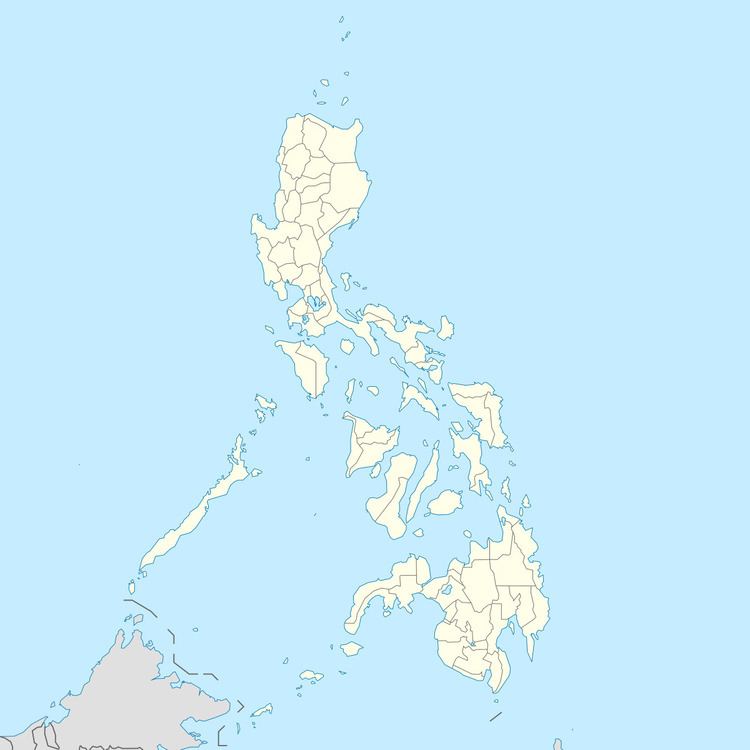 | ||
The UNESCO (United Nations Educational, Scientific and Cultural Organization) has designated six World Heritage Sites in the Philippines. The UNESCO World Heritage Sites are places of importance to cultural or natural heritage as described in the UNESCO World Heritage Convention.
Contents
- Tentative List
- Transboundary Nomination in the Making
- Members of the Organization of World Heritage Cities Programme
- Former UNESCO Tentative Sites Before the March 2015 Revision
- References
The Philippines, following its ratification of the convention on Thursday, September 19, 1985, made its historical and natural sites eligible for inclusion on the list. The Philippines had its first sites included in 1993, and since 2014, has six sites on the list spanning nine locations. Of those six sites, three are cultural and three natural. In 2015, the 28 sites in the 'Tentative List' were revised. Currently, the Tentative List for possible nomination in the future contains nineteen submissions.
The Philippine National Government, the National Museum of the Philippines, the University of Santo Tomas, the UNESCO Commission of the Philippines and other concerned parties encourage more historic churches, municipal and city governments, provincial governments, national parks, and private entities to submit their nominations of sites that they have jurisdiction of to UNESCO to revitalize heritage conservation in the country and to internationalize the importance of heritage conservation in the Philippines, which is seen to be the greatest frontier of westernized Asian nations in a hastily industrializing Asia.
Tentative List
The following 19 sites are on the Tentative List for the Philippines, meaning that the government intends to consider them for nomination in the future: In March 20, 2015, the UNESCO Tentative List of the Philippines was fully revised after recommendations from the UNESCO itself. The original Tentative List before the March 2015 Revision enlisted 28 sites. In October 2015, the National Commission for Culture and the Arts announced through their official Instagram account that they shall nominate the Sugar Centrals of the Philippines and related properties to the World Heritage List.
Transboundary Nomination in the Making
An Experts’ Roundtable Meeting was held at the University of Santo Tomas (UST) on April 23, 2015 as part of the preparation of the Philippines for the possible transnational nomination of the Manila-Acapulco Galleon Trade Route to the World Heritage List. The nomination will be made jointly with Mexico.
The following are the experts and the topics they discussed during the roundtable meeting: Dr. Celestina Boncan on the Tornaviaje; Dr. Mary Jane A. Bolunia on Shipyards in the Bicol Region; Mr. Sheldon Clyde Jago-on, Bobby Orillaneda, and Ligaya Lacsina on Underwater Archaeology; Dr. Leovino Garcia on Maps and Cartography; Fr. Rene Javellana, S.J. on Fortifications in the Philippines; Felice Sta. Maria on Food; Dr. Fernando Zialcita on Textile; and Regalado Trota Jose on Historical Dimension. The papers presented and discussed during the roundtable meeting will be synthesized into a working document to establish the route’s Outstanding Universal Value.
Members of the Organization of World Heritage Cities Programme
The Philippines has currently 2 cities that are members of Organization of World Heritage Cities, a more than 250-city member organization. The first was the city of Vigan in Ilocos Sur followed by the municipality of Miagao in Iloilo.
Former UNESCO Tentative Sites Before the March 2015 Revision
Both Guiuan Church of Eastern Samar and Loboc Church of Bohol, despite being heavily damaged by the Bohol earthquake and Supertyphoon Haiyan in 2013, are still considered part of the Philippines' UNESCO Tentative List as part of the Five churches in the 'Baroque Churches of the Philippines (Extension)'. Baclayon Church of Bohol, on the other hand, was almost completely destroyed and suffered the worst destruction of a National Cultural Treasure through natural calamity. It is being restored, like all other heritage sites affected by the series of calamities in 2013, by the National Museum of the Philippines.
The Maranao Settlement of Tugaya was suggested by UNESCO to be submitted in the future by the Philippines as a UNESCO Intangible Cultural Heritage instead.
Mount Apo Natural Park, Panglao Island, and Taal Volcano Protected Landscape were removed from the Tentative List because their original features, as stated in the submissions, do not show their current features due to the massive disturbances in the park. Resubmitting the sites through revision of its features is a possible move to gain back their Tentative status.
The Angono Petroglyphs have been formally infused in the UNESCO Tentative site of 'Petroglyphs and Petrographs of the Philippines', which includes four other sites from all over the country.
San Sebastian Church of Manila, Spanish Colonial Fortifications of the Philippines, Agusan Marsh Wildlife Sanctuary, Liguasan Marsh, Mount Matutum Protected Landscape, and Mount Kitanglad undergo a stringent process upon review; and some would have a hard time meeting the criteria set by the World Heritage Committee (WHC). Due to this, they were removed from the list. Bulking Mount Matutum with other national parks in south central Mindanao, like Indonesia did for their Tropical Rainforest of Sumatra nomination bid, is recommended. Similar nominations to bulk national parks in north central Mindanao, eastern Mindanao, eastern Visayas, the Philippine Cordilleras, northern Sierra Madre, southern Sierra Madre, Panay-Negros, Zambales-Bataan, Sulu faunal region, and other rainforest cluster regions in the country are also recommended.
